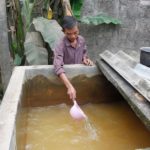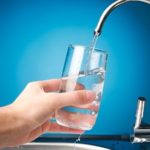Before the availability of bottled water, it was common for Vietnamese people to drink boiled water. So, which is better for your health, according to experts: bottled water or boiled water?
Bottled Water vs Boiled Water: Which is the Healthier Choice?
A study published in the Proceedings of the National Academy of Sciences (PNAS) journal found that, on average, there are about a quarter of a million plastic particles in a one-liter bottle of water, which is 100 times more than previously estimated.

The age-old question: which is healthier, boiled or bottled water?
Specifically, scientists examined five different bottles of water from three popular brands (names undisclosed). On average, they found 240,000 particles from seven different types of plastic, mostly in the form of nano-plastics. Previous studies focused on microplastics (particles smaller than 5mm and larger than 1 micron), but nano-plastics are smaller than 1 micron in size. These nano-plastics are more dangerous as they can easily enter all human organs, including the intestines, lungs, bloodstream, and potentially the heart and brain. They can even cross the placenta and reach the fetus.
The study’s lead author, Naixin Qian, said: “This study provides a powerful tool to address the challenges in analyzing nano-plastics, promising to narrow the current knowledge gap on nano-scale plastic pollution.” However, research into the real harm of nano-plastics is still ongoing.
A recent study published in the journal “Environmental Science and Technology Express” by Professor Li Zhanjun of Guangzhou Medical University and Professor Zeng Yongping of Shandong University’s School of the Environment found that simply boiling and filtering water can remove up to 84% of nano/microplastics. This is the simplest and safest way to purify water and reduce the amount of microplastics consumed by humans.
Recent research has found that as water temperature increases during boiling (from 25-95 degrees Celsius), the removal efficiency of plastic particles also increases, from an initial 2% to 28%, and then to 84% at 100 degrees Celsius. Simultaneously, the concentration of microplastic particles decreased from 30 particles/microliter to 4.8 particles/microliter.

Boiled water helps remove harmful microplastic particles
So, how do microplastics in water change when boiled? The study found that the microplastic particles disappeared as they were transferred from the water to the sediment. The calcium carbonate in the water sediment can remove microplastic particles through precipitation.
Finally, the studies compared the amount of microplastics consumed by adults and children in boiled water and tap water in all 67 areas on six continents, taking into account water quality and drinking habits worldwide. The results showed that the daily intake of microplastics through boiled water was found to be 2-5 times less than that of tap water. This highlights the wisdom of the ancient practice of drinking boiled water.



































